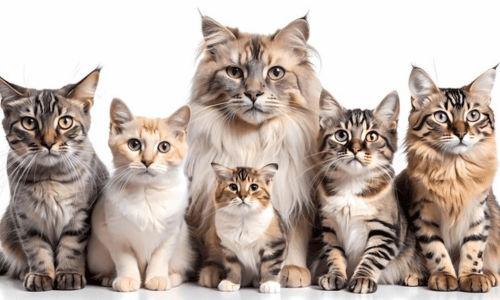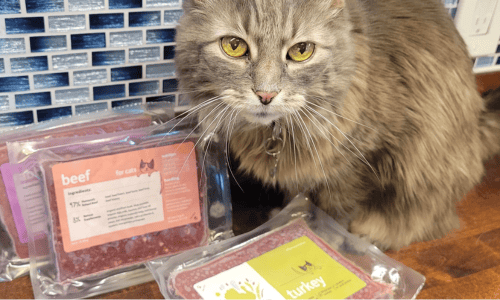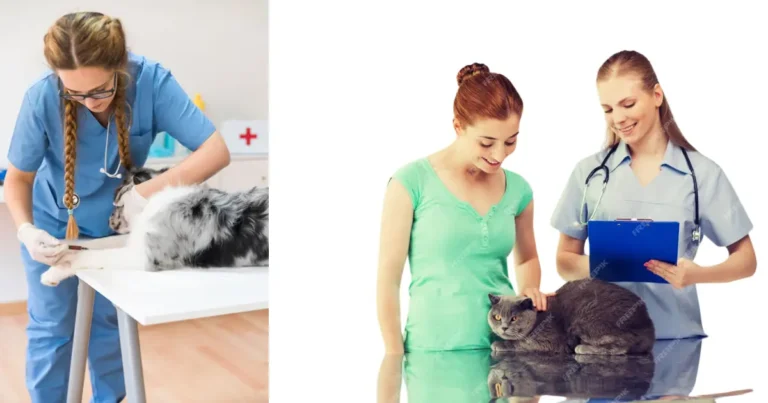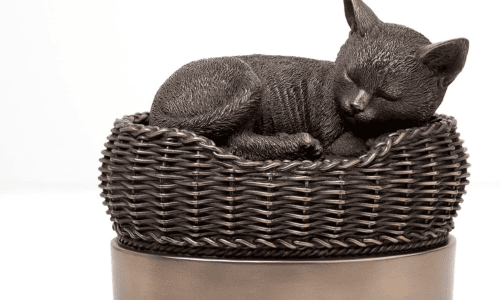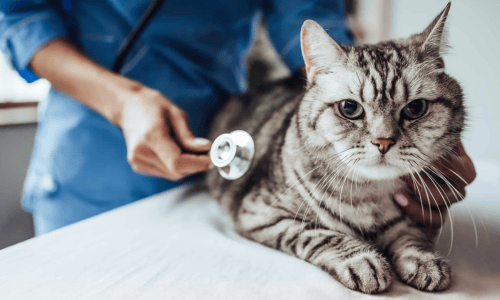Fresh Pet Cat Food: A Healthy Choice for Your Feline Friend
Choosing the right food for your cat is one of the most important decisions you’ll make as a pet owner. With more people opting for healthier, fresher options for themselves, it’s no surprise that fresh pet cat food is becoming a popular choice for our feline friends as well. Packed with real ingredients and free from fillers and artificial additives, fresh cat food offers a natural and nutritious alternative to traditional dry kibble and canned foods. Let’s explore what fresh pet cat food is all about, why it’s beneficial, and how you can make the best choice for your cat.
Introduction to Fresh Pet Cat Food
What is Fresh Pet Cat Food?
Fresh pet cat food refers to cat food made with real, whole ingredients like chicken, fish, vegetables, and grains. It’s minimally processed and often prepared in small batches to ensure quality and freshness. Unlike dry kibble or canned food, fresh cat food is typically kept refrigerated or frozen to maintain its nutritional value. It’s a step closer to what cats might naturally eat in the wild, focusing on high-quality proteins and fewer processed ingredients.
How Fresh Pet Cat Food Differs from Traditional Cat Food
Traditional cat food, such as kibble and canned varieties, often contains fillers like corn, soy, and by-products that offer little nutritional value. In contrast, fresh pet cat food is made from whole ingredients and usually avoids unnecessary additives and preservatives. This means your cat gets more of the nutrients they need for a healthier, more balanced diet.
Benefits of Fresh Pet Cat Food
Nutritional Advantages for Cats
One of the main benefits of fresh pet cat food is the nutritional quality. Since the ingredients are fresher and less processed, more nutrients are retained in the food. Fresh pet food is typically higher in protein, essential for maintaining your cat’s muscle mass and overall health. The vitamins and minerals found in whole ingredients help support your cat’s immune system and overall well-being.
Improved Digestion and Coat Health
Cats fed on fresh food often experience improvements in their digestion. Since fresh pet food contains fewer fillers and artificial additives, it’s easier on their stomachs and can reduce the likelihood of food allergies or intolerances. Plus, the high-quality fats and proteins found in fresh food contribute to shinier coats and healthier skin.
Reduced Fillers and Additives
Fresh cat food usually omits unnecessary fillers like corn, wheat, and soy. These ingredients are commonly found in traditional cat food to bulk up the product but don’t provide much nutritional value. By avoiding these fillers, fresh cat food helps your cat get more of the essential nutrients they need without the added junk.
Types of Fresh Pet Cat Food Available
Raw vs. Cooked Fresh Pet Food
When it comes to fresh cat food, there are two main categories: raw and cooked. Raw fresh cat food is uncooked and mimics a more natural diet that cats might eat in the wild. It’s high in protein and moisture and is usually made with raw meat, organs, and bones. Cooked fresh cat food, on the other hand, is lightly cooked to eliminate bacteria while still preserving most of the nutrients.
Grain-Free and Specialized Diets
Many fresh cat food options come in grain-free varieties, which can be beneficial for cats with grain sensitivities or allergies. There are also specialized fresh food options available, such as those designed for cats with specific health conditions like urinary tract issues or weight management.
Freshly Prepared vs. Commercial Fresh Cat Food
Some pet owners prefer to make fresh cat food at home using recipes tailored to their cat’s needs. Others opt for commercially prepared fresh cat food, which is convenient and ensures a balanced meal. Commercial fresh food is made with high-quality ingredients and is often delivered to your door in pre-portioned meals, making it easy to serve.
How to Choose the Best Fresh Pet Cat Food
Understanding Your Cat’s Nutritional Needs
Before making the switch to fresh pet food, it’s important to understand your cat’s specific nutritional requirements. They also require specific nutrients like taurine, which is found in animal tissues, so choosing a fresh food that meets these needs is essential.
Choosing Between Homemade and Store-Bought
Deciding between homemade and store-bought fresh cat food depends on your lifestyle and preferences. Homemade food allows for more control over ingredients, but it requires time, effort, and a proper understanding of feline nutrition. Store-bought options, especially those from reputable brands, are convenient and formulated to provide balanced nutrition.
Checking the Ingredients and Labels
When choosing fresh pet cat food, always check the ingredient list. Look for whole proteins like chicken, turkey, or fish as the main ingredient. Avoid foods with vague terms like “meat by-products” or “animal meal.” Ensure the food is free from artificial preservatives, colors, and fillers.
Transitioning Your Cat to Fresh Pet Food
Steps for Gradually Introducing Fresh Food
Switching your cat to fresh food should be done gradually to avoid digestive upset. Start by mixing a small amount of fresh food with your cat’s regular diet, slowly increasing the proportion of fresh food over the course of a week or two. This allows your cat’s digestive system to adjust to the new food without causing any stomach issues.
Monitoring Your Cat’s Reaction to the Change
As you transition your cat to fresh pet food, pay attention to their behavior and health. Look for signs of improved energy, digestion, and coat condition. If your cat shows any signs of discomfort or digestive issues, such as vomiting or diarrhea, slow down the transition or consult your vet.
Homemade Fresh Pet Cat Food Recipes
Easy and Nutritious Recipes You Can Try
If you’re up for preparing fresh food at home, here are a couple of easy and nutritious recipes to try:
- Chicken and Pumpkin Feast: Mix cooked chicken breast, pumpkin puree, and a small amount of olive oil. Add a dash of taurine powder to ensure it meets your cat’s nutritional needs.
- Salmon and Sweet Potato Delight: Cook salmon and mash it with boiled sweet potatoes. You can also add a few cooked peas for extra nutrients.
Precautions When Making Cat Food at Home
When preparing homemade cat food, ensure that you include the right vitamins and minerals. Cats have specific nutritional needs, and deficiencies in taurine, calcium, or vitamin A can lead to health problems. Consult your vet or a pet nutritionist to ensure your recipes are balanced and complete.
Popular Fresh Pet Cat Food Brands
Comparison of Leading Fresh Pet Cat Food Brands
Several commercial brands have made a name for themselves in the fresh pet food market. Some popular ones include:
- Smalls: Offers human-grade fresh cat food in a variety of protein options. Known for its high-quality ingredients and convenient home delivery.
- NomNomNow: Specializes in freshly made, portioned meals that are delivered right to your door. Known for its transparency and nutritional balance.
- JustFoodForCats: Focuses on fresh, balanced meals and offers a variety of recipes tailored to cats’ dietary needs.
Pros and Cons of Commercial Fresh Cat Food
- Pros: Convenient, pre-portioned, nutritionally balanced, and made from high-quality ingredients.
- Cons: More expensive than traditional cat food, requires refrigeration or freezing, and may not have the same shelf life as kibble or canned food.
Storing and Serving Fresh Pet Cat Food
Proper Storage Methods to Maintain Freshness
To ensure your fresh cat food stays safe and nutritious, proper storage is key. Fresh cat food should be kept in the refrigerator and used within a few days of opening. For longer storage, it can be frozen and thawed as needed. Always check the packaging for specific storage instructions.
Serving Sizes and Feeding Guidelines
Follow the feeding guidelines provided by the manufacturer or your veterinarian. Fresh cat food is often more calorie-dense than kibble, so make sure you’re giving the right portion based on your cat’s size, weight, and activity level.
Common Myths About Fresh Pet Cat Food
Debunking Misconceptions About Raw vs. Cooked Fresh Food
One common misconception is that raw food is always better than cooked food. While raw diets do mimic a more natural feeding style, they also come with risks such as bacteria and parasites. Lightly cooked fresh food can provide similar nutritional benefits while minimizing these risks.
Cost vs. Long-Term Health Benefits
Some people shy away from fresh cat food due to its higher cost. However, the long-term health benefits, such as improved digestion, shinier coats, and fewer health issues, often outweigh the initial price difference. Investing in your cat’s nutrition can lead to fewer vet visits down the road.
Conclusion: Why Fresh Pet Cat Food is a Great Choice for Your Cat
Feeding your cat fresh pet food is an excellent way to ensure they’re getting high-quality nutrition without unnecessary fillers and additives. Whether you opt for homemade or commercial fresh food, the benefits are clear—better digestion, a shinier coat, and overall improved health. By choosing fresh, natural ingredients, you’re giving your cat the best chance at a long, happy, and healthy life.




